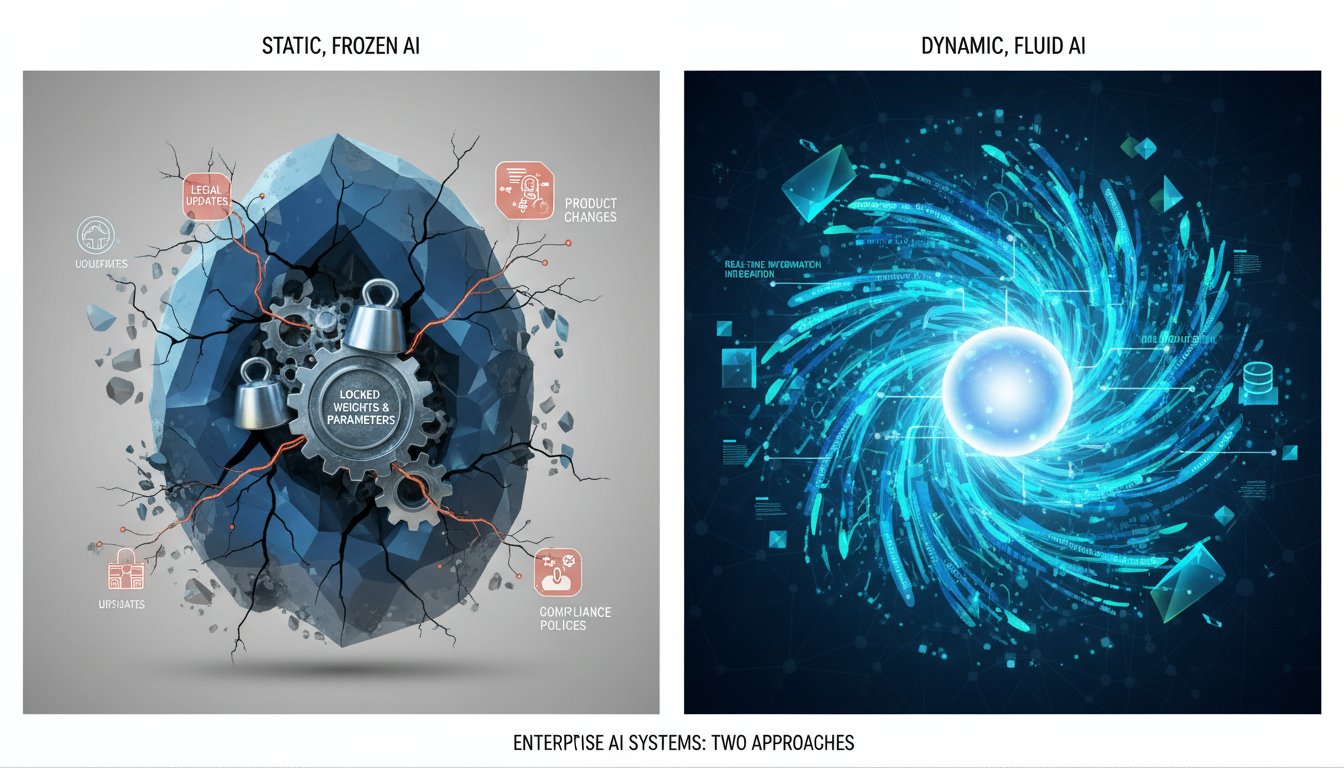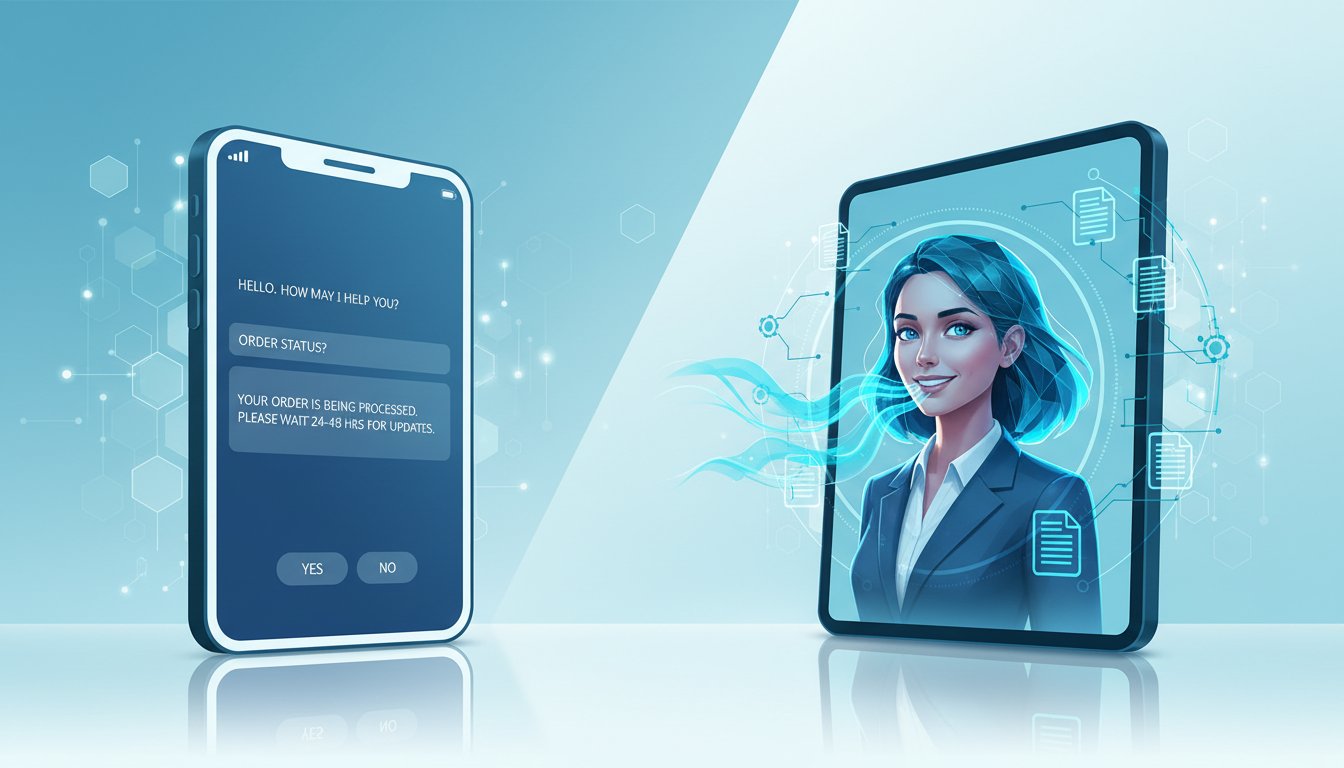Enterprise AI teams are hitting a wall with traditional RAG systems. While single-agent retrieval works for simple question-answering, complex business scenarios demand something more sophisticated. What happens when you need to analyze financial reports, cross-reference legal documents, and generate executive summaries—all in a single workflow?
The answer lies in multi-agent RAG architectures, and CrewAI has emerged as the leading framework for orchestrating these intelligent agent teams. Unlike monolithic RAG systems that struggle with complex, multi-step reasoning, CrewAI enables you to build specialized AI agents that collaborate seamlessly to solve enterprise challenges.
In this comprehensive guide, we’ll walk through building a production-ready multi-agent RAG system using CrewAI’s latest features. You’ll learn how to design agent hierarchies, implement sophisticated retrieval strategies, and deploy a system that can handle the most demanding enterprise workloads. By the end, you’ll have a fully functional multi-agent RAG architecture that scales with your organization’s needs.
Understanding Multi-Agent RAG Architecture
Traditional RAG systems operate with a single retrieval-generation loop: retrieve relevant documents, augment the prompt, and generate a response. This approach breaks down when dealing with complex queries that require multiple reasoning steps, domain expertise, or coordinated analysis across different data sources.
Multi-agent RAG systems solve this by distributing specialized tasks across dedicated agents. Each agent has a specific role—document analysis, fact verification, synthesis, or quality control—and they work together to produce comprehensive, accurate results.
The CrewAI Advantage
CrewAI stands out in the multi-agent landscape because of its production-ready features:
Hierarchical Agent Management: Unlike flat agent architectures, CrewAI supports complex organizational structures with managers, specialists, and coordinators.
Built-in Memory Systems: Agents maintain context across conversations and can learn from previous interactions, crucial for enterprise applications.
Task Orchestration: CrewAI’s task management system ensures agents work in the correct sequence, with proper handoffs and error handling.
Integration Ecosystem: Native connectors for enterprise data sources, vector databases, and monitoring tools reduce implementation complexity.
Designing Your Agent Architecture
Successful multi-agent RAG systems start with thoughtful agent design. Each agent should have a clear role, specific expertise, and well-defined interfaces for collaboration.
Core Agent Types
Research Agent: Specializes in document retrieval and initial analysis. This agent queries vector databases, filters results by relevance, and prepares structured summaries for downstream agents.
Analysis Agent: Performs deep analysis on retrieved documents. It can specialize in specific domains (financial, legal, technical) and apply domain-specific reasoning patterns.
Synthesis Agent: Combines insights from multiple analysis agents into coherent responses. This agent handles conflicting information, identifies gaps, and structures final outputs.
Quality Control Agent: Reviews outputs for accuracy, completeness, and adherence to enterprise standards. This agent can flag potential issues and trigger revision cycles.
Agent Interaction Patterns
CrewAI supports several interaction patterns that determine how agents collaborate:
Sequential Workflows: Agents work in a predefined order, with each agent building on the previous agent’s output. Ideal for structured analysis pipelines.
Parallel Processing: Multiple agents work simultaneously on different aspects of a problem, then combine results. Excellent for complex queries requiring diverse expertise.
Hierarchical Delegation: Manager agents break down complex tasks and delegate subtasks to specialist agents. Perfect for enterprise scenarios with clear authority structures.
Setting Up the Development Environment
Before building your multi-agent RAG system, establish a robust development environment that supports the complexity of multi-agent architectures.
Environment Configuration
Start by installing CrewAI and its dependencies:
pip install crewai[tools]
pip install langchain-openai
pip install chromadb
pip install sentence-transformers
Vector Database Setup
For production deployments, choose a vector database that supports multi-tenant access and high-throughput operations. ChromaDB works well for development, while Pinecone or Weaviate are better for production:
import chromadb
from chromadb.config import Settings
# Initialize ChromaDB with persistence
client = chromadb.PersistentClient(
path="./chroma_db",
settings=Settings(
allow_reset=True,
anonymized_telemetry=False
)
)
Document Processing Pipeline
Implement a robust document processing pipeline that can handle various file types and prepare them for multi-agent consumption:
from langchain.text_splitter import RecursiveCharacterTextSplitter
from langchain.embeddings import OpenAIEmbeddings
class DocumentProcessor:
def __init__(self):
self.text_splitter = RecursiveCharacterTextSplitter(
chunk_size=1000,
chunk_overlap=200,
separators=["\n\n", "\n", ".", " "]
)
self.embeddings = OpenAIEmbeddings()
def process_documents(self, documents):
chunks = self.text_splitter.split_documents(documents)
return self.embeddings.embed_documents([chunk.page_content for chunk in chunks])
Building Your First Multi-Agent RAG System
Now let’s build a practical multi-agent RAG system for enterprise document analysis. This system will demonstrate the key patterns you’ll use in production deployments.
Agent Implementation
Start by defining your core agents with specific roles and capabilities:
from crewai import Agent, Task, Crew
from crewai_tools import SerperDevTool, WebsiteSearchTool
from langchain_openai import ChatOpenAI
# Initialize the language model
llm = ChatOpenAI(model="gpt-4-turbo-preview", temperature=0.1)
# Research Agent
research_agent = Agent(
role="Research Specialist",
goal="Retrieve and analyze relevant documents from the knowledge base",
backstory="You are an expert at finding and analyzing relevant information from large document collections. You excel at identifying key passages and extracting actionable insights.",
verbose=True,
allow_delegation=False,
llm=llm,
tools=[WebsiteSearchTool()]
)
# Analysis Agent
analysis_agent = Agent(
role="Domain Expert",
goal="Perform deep analysis on retrieved documents using domain expertise",
backstory="You are a domain expert with deep knowledge in business, technology, and strategy. You excel at identifying patterns, drawing connections, and providing expert insights.",
verbose=True,
allow_delegation=False,
llm=llm
)
# Synthesis Agent
synthesis_agent = Agent(
role="Strategic Synthesizer",
goal="Combine multiple analysis results into comprehensive, actionable recommendations",
backstory="You are a strategic thinker who excels at combining diverse inputs into clear, actionable recommendations. You have a talent for identifying the most important insights and presenting them clearly.",
verbose=True,
allow_delegation=False,
llm=llm
)
Task Definition and Orchestration
Define tasks that specify what each agent should accomplish and how they should collaborate:
# Research Task
research_task = Task(
description="Research the given topic by retrieving relevant documents and extracting key information. Focus on finding authoritative sources and identifying the most relevant passages.",
agent=research_agent,
expected_output="A structured summary of relevant documents with key quotes and source references."
)
# Analysis Task
analysis_task = Task(
description="Analyze the research findings using domain expertise. Identify patterns, implications, and potential opportunities or risks.",
agent=analysis_agent,
expected_output="A detailed analysis with expert insights, implications, and recommendations."
)
# Synthesis Task
synthesis_task = Task(
description="Synthesize the research and analysis into a comprehensive response that addresses the original query with actionable recommendations.",
agent=synthesis_agent,
expected_output="A comprehensive response with clear recommendations and supporting evidence."
)
Crew Assembly and Execution
Assemble your agents into a crew and define the execution workflow:
# Create the crew
analysis_crew = Crew(
agents=[research_agent, analysis_agent, synthesis_agent],
tasks=[research_task, analysis_task, synthesis_task],
verbose=2,
process="sequential" # or "hierarchical" for complex scenarios
)
# Execute the workflow
def run_analysis(query):
result = analysis_crew.kickoff(inputs={"topic": query})
return result
Advanced Features and Production Considerations
Moving from prototype to production requires implementing advanced features that ensure reliability, scalability, and maintainability.
Memory and Context Management
Implement persistent memory systems that allow agents to learn from previous interactions:
from crewai.memory import ShortTermMemory, LongTermMemory
# Configure memory systems
short_term_memory = ShortTermMemory(
provider="chroma",
config={"collection_name": "agent_short_term_memory"}
)
long_term_memory = LongTermMemory(
provider="chroma",
config={"collection_name": "agent_long_term_memory"}
)
# Apply to agents
research_agent.memory = short_term_memory
analysis_agent.memory = long_term_memory
Error Handling and Resilience
Implement robust error handling to ensure system reliability:
class ResilientCrew:
def __init__(self, crew, max_retries=3):
self.crew = crew
self.max_retries = max_retries
def execute_with_retry(self, inputs):
for attempt in range(self.max_retries):
try:
return self.crew.kickoff(inputs=inputs)
except Exception as e:
if attempt == self.max_retries - 1:
raise e
print(f"Attempt {attempt + 1} failed: {e}. Retrying...")
time.sleep(2 ** attempt) # Exponential backoff
Monitoring and Observability
Implement comprehensive monitoring to track agent performance and system health:
import logging
from datetime import datetime
class AgentMonitor:
def __init__(self):
self.logger = logging.getLogger("multi_agent_rag")
self.metrics = {}
def log_agent_performance(self, agent_name, task_duration, success):
self.logger.info(f"Agent: {agent_name}, Duration: {task_duration}s, Success: {success}")
if agent_name not in self.metrics:
self.metrics[agent_name] = {"total_tasks": 0, "successful_tasks": 0, "avg_duration": 0}
self.metrics[agent_name]["total_tasks"] += 1
if success:
self.metrics[agent_name]["successful_tasks"] += 1
# Update average duration
current_avg = self.metrics[agent_name]["avg_duration"]
total_tasks = self.metrics[agent_name]["total_tasks"]
self.metrics[agent_name]["avg_duration"] = (current_avg * (total_tasks - 1) + task_duration) / total_tasks
Deployment and Scaling Strategies
Production multi-agent RAG systems require careful consideration of deployment architecture and scaling strategies.
Containerized Deployment
Package your multi-agent system in containers for consistent deployment across environments:
FROM python:3.11-slim
WORKDIR /app
COPY requirements.txt .
RUN pip install -r requirements.txt
COPY . .
EXPOSE 8000
CMD ["uvicorn", "main:app", "--host", "0.0.0.0", "--port", "8000"]
Horizontal Scaling
Implement agent pools that can scale horizontally based on demand:
from concurrent.futures import ThreadPoolExecutor
import queue
class AgentPool:
def __init__(self, agent_factory, pool_size=5):
self.agents = [agent_factory() for _ in range(pool_size)]
self.available_agents = queue.Queue()
for agent in self.agents:
self.available_agents.put(agent)
def execute_task(self, task_data):
agent = self.available_agents.get()
try:
result = agent.execute(task_data)
return result
finally:
self.available_agents.put(agent)
Performance Optimization
Optimize system performance through caching, batching, and intelligent resource management:
from functools import lru_cache
import asyncio
class OptimizedRAGSystem:
def __init__(self):
self.vector_cache = {}
self.response_cache = {}
@lru_cache(maxsize=1000)
def cached_retrieval(self, query_hash):
# Implement cached document retrieval
pass
async def batch_process(self, queries):
# Process multiple queries in parallel
tasks = [self.process_query(query) for query in queries]
return await asyncio.gather(*tasks)
The future of enterprise AI lies in sophisticated multi-agent systems that can handle complex, real-world scenarios. CrewAI provides the foundation for building these systems, but success depends on thoughtful architecture, robust implementation, and careful attention to production requirements.
By following this guide, you’ve built a production-ready multi-agent RAG system that can scale with your organization’s needs. The key is starting with a solid foundation and iteratively adding complexity as your requirements evolve. Remember that the most successful implementations focus on solving specific business problems rather than showcasing technical capabilities.
Ready to transform your organization’s approach to AI? Start with a focused use case, implement the patterns from this guide, and gradually expand your multi-agent capabilities. The investment in proper architecture will pay dividends as your AI initiatives mature and scale across the enterprise.




